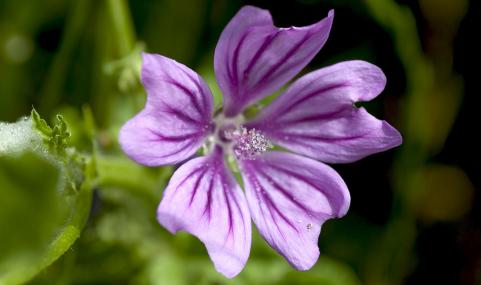Common Mallow is a handsome, large, spreading plant with beautiful deep-pink flowers that appear from June to October. It can be found on roadside verges, alongside footpaths and on waste ground. Certain parts of Common Mallow are edible (leaves, flowers and seeds) and there is evidence that the Romans may have deliberately cultivated the plant to be used for food and medicine.
Although they sometimes don't look especially wildlife-friendly, our roadside verges, railway cuttings and waste grounds can provide valuable habitats for all kinds of plants and animals. The Wildlife Trusts get involved in different projects to help make these places as beneficial for wildlife as possible. We have a vision of a 'Living Landscape': a network of habitats and wildlife corridors across town and country, which are good for both wildlife and people. You can support this greener vision for the future by joining your local Wildlife Trust.
